 Petzlover
PetzloverBoth Majestic Tree Hound and Walker Hound are originated from United States. Majestic Tree Hound may grow 7 cm / 3 inches higher than Walker Hound. Majestic Tree Hound may weigh 18 kg / 40 pounds more than Walker Hound. Both Majestic Tree Hound and Walker Hound has same life span. Both Majestic Tree Hound and Walker Hound has almost same litter size. Both Majestic Tree Hound and Walker Hound requires Low Maintenance.
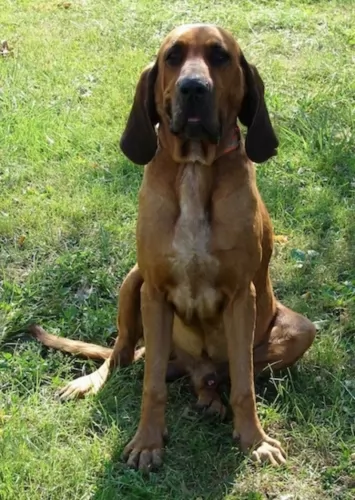 The Majestic Tree Hound is a fairly new crossbreed dog. While the actual breed is very recent, the stem stock goes way back to medieval times.
The Majestic Tree Hound is a fairly new crossbreed dog. While the actual breed is very recent, the stem stock goes way back to medieval times.
The dog’s heritage goes back to the St. Hubert Hound named after Francois Hubert. He bred the best scenting hounds in Southern France.
In fact when France experienced political unrest that resulted in emigration to the United States, they brought their dogs, among them hound dogs which were then crossed with other dogs. Bloodhounds, English Foxhounds, American Coon and Big Game Hounds have all contributed to the Majestic Tree Hound after a long time of breeding to bring forth a hound that had sharp scenting abilities as well as a balanced temperament.
The origin of the Majestic Tree Hound is the United States.
Today they are not seen much outside the United States. The first Majestic's were registered with the National Kennel Club in April 1980.
The Walker Hound is actually two different breeds today both descendant from the original Walker. They are the Running Walker Hound and the Treeing Walker Coonhound and mark their ancestors as the American Foxhound and the English Foxhound. The Treeing Walker is a breed developed in the United States when a “Tennessee Lead Dog” was crossed with a Walker Hound. The Running Walker is considered a Foxhound not a coonhound. They Running Walker does not have a treeing instinct and is not as common in hunting in the southern US as the Treeing Walker Coonhound.
In 1945 the United Kennel Club (UKC) recognized the Treeing Walker Coonhound and by the AKC (American Kennel Club) in 2012. They were developed to hunt and “tree” racoons – so the coonhound label. They also are capable of hunting bears, deer, bobcats and mountain lions. Their baying voice is distinctive that even at a great distance a hunter can recognize the voice of his dog.
Both types of Walkers are calm, gentle and friendly family dogs. The original Walker Hounds were bred in Kentucky by John Walker and George Maupin. The Walker Coonhound, Treeing was recognized as part of the English Coonhound breed by the UKC in 1905. In 1945, they were then recognized as their own breed by the UKC.
They have become the most popular hound competitor in coon hunt competitions. They are known for speed and an ability to catch more racoons in a shorter period of time than any other coonhound. They also tree squirrels, cougars. Opossums, roof rats and skunks.
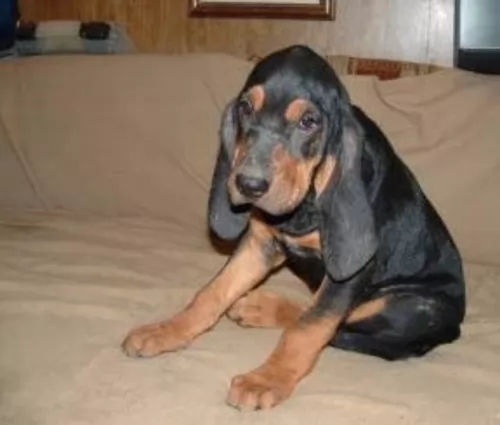 The Majestic Treehound is a large sized working dog. This dog is a cross between the Bloodhound and the Black and Tan Coonhound. Both male and female stand at roughly 61-76 cm in height and weighs in at about 33 – 50kg.
The Majestic Treehound is a large sized working dog. This dog is a cross between the Bloodhound and the Black and Tan Coonhound. Both male and female stand at roughly 61-76 cm in height and weighs in at about 33 – 50kg.
If you want your dog to become a parent, you can expect between 2 to 6 of the cutest puppies.
The coat is smooth, short and dense and comes in a number of colors such as black, black and tan grey and white as well as red and blue ticking.
The dog has sunken brown or yellow eyes, particularly long, floppy ears, a deep chest and a long tail. The tail is set high and is thick at the base and is essentially carried in accordance with the dog’s mood. The tail is never carried over the back. There was a time when the tail of the Majestic was docked, giving him an attractive, compact look. They are powerfully built dogs with a dignified look to them.
The Majestic Treehound has always been a most fearless and adept hunter and he is a dog that just loves being busy. They are also loyal and devoted companions for their human families.
He is a huge dog but he is gentle, good natured and kind with children and is also willing to get on well with pets in the home. You won’t find him being much of a guard dog though because he is just too friendly for this.
He is a dog that is going to need regular exercise, and his sheer size and exercise requirements will make it that he is better off living in the countryside than in the city.
He is an intelligent dog who will be easy to train. Training and socialization will be good for him as he knows exactly how to behave in different situations. He doesn’t want to be left on his own for too long because he bonds closely with his owners and wants to be around them constantly.
This working dog is tall and lean with the males being somewhat larger than the females. They have broad skulls and hanging, long ears with a long muzzle. They have a soft expression in their dark eyes, straight legs and compact cat-like feet. The coat is smooth, glossy and fine. The traditional color is a tricolor or a bi-color in white with black and tan markings. The bicolors are white and tan or white and black. Their speed comes from the long , powerful and muscled legs and hindquarters along with the frame that is lean and streamlined.
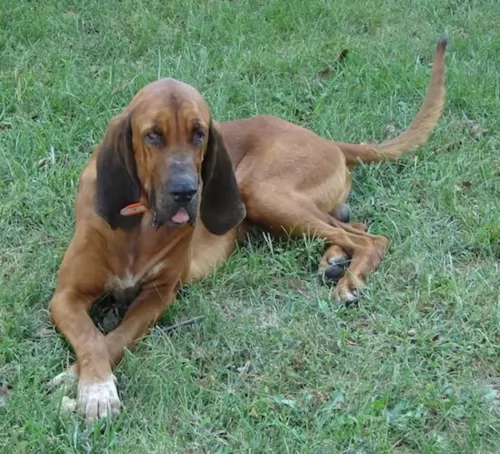 This large attractive dog has a gentle nature and is loving and affectionate towards his human family, getting on well with children and other pets in the family.
This large attractive dog has a gentle nature and is loving and affectionate towards his human family, getting on well with children and other pets in the family.
As with most little dogs, this big dog doesn’t like to be left alone for a long time. With training and socialization he becomes obedient and amicable, knowing how to behave well so that he can be taken anywhere.
Treat this loving dog with love and care and he is guaranteed to make you a splendid family pet.
2.Special talents Walkers are capable of covering a lot of ground in a hurry. Speed and treeing instinct.
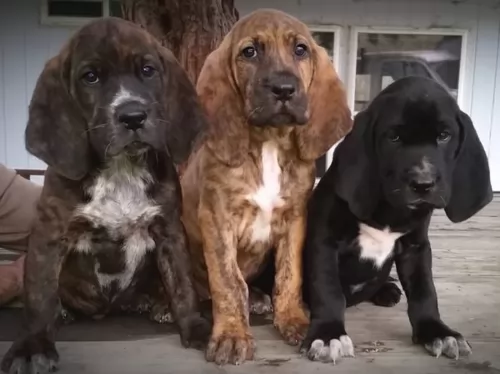 The Majestic is a robust breed, and with good food and exercise he can live to be between 10 and 13 years of age.
The Majestic is a robust breed, and with good food and exercise he can live to be between 10 and 13 years of age.
It has been discovered that like many other dogs, he can battle with hip dysplasia. Large dogs are more prone to hip dysplasia. It is an abnormal formation of the hip socket. It’s a serious condition that can cause arthritis and lameness.
Hip dysplasia often begins when a dog is still a puppy. One of the symptoms is difficulty with getting up after lying down, pain in hip joints and even loss of muscle mass. You will need to get your pet to the vet. The vet will perform a complete physical exam on your dog and then talk to you about treatment.
The Treeing Walker Coonhound is a fairly healthy breed needing to watch out for accidents on the hunting trail from shrubs, brush and tree limbs. They can become tick infested if you are not careful, especially in their long ears that flop on the side of their head. Clean their ears weekly and check them after every run in the woods.
They are also prone to hip dysplasia and eye issues. Hip dysplasia can cause lameness and/or arthritis. Before to keep the ear clear of debris and wax to avoid ear infections.
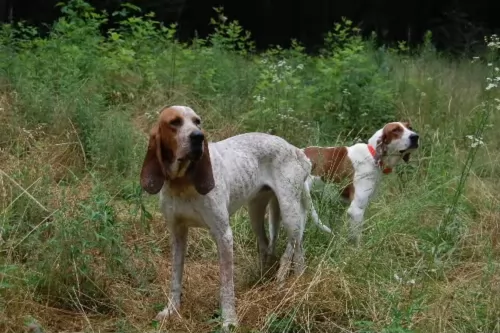 Occasional brushing, perhaps twice a week, will be enough to maintain this dog’s short coat. The long ears tend to drag on the ground, collecting dirt and moisture, and the ears particularly will need to be washed or wiped down and checked inside for infection.
Occasional brushing, perhaps twice a week, will be enough to maintain this dog’s short coat. The long ears tend to drag on the ground, collecting dirt and moisture, and the ears particularly will need to be washed or wiped down and checked inside for infection.
This is a dog with high exercise requirements. A walk a day for him is a good thing but it won’t be enough – he will need some rough and tumble games and want to join you on hikes, swimming and jogs.
Majestic Tree Hounds require nutritious food. If you want to use commercially manufactured food, make sure its the better one as some of the cheaper brands put fillers, preservatives and colorants in and this can cause a whole lot of damage for your dog.
Buy quality food for your pet. The idea is to keep things simple for your big dog so that he doesn’t succumb to digestive problems. Apart from top quality kibble, homemade food will be excellent for him. Boiled chicken cooked in some coconut oil with some brown rice and pasta and some cooked or raw vegetables will be delicious for your dog. You can add it to his dry kibble. Remember to ensure he always has cool, fresh water.
1Feeding the puppy – don’t overfeed. Feed quality medium size breed 3-4 small meals per day
2.Feeding the adult – don’t overfeed. Feed quality medium size breed 1-2 small meals per day
running or hiking companion. long daily walks at a minimum. He loves to run and play with his family. Hunting and “coon trials” are his specialty and best ways to get exercise. He needs to run